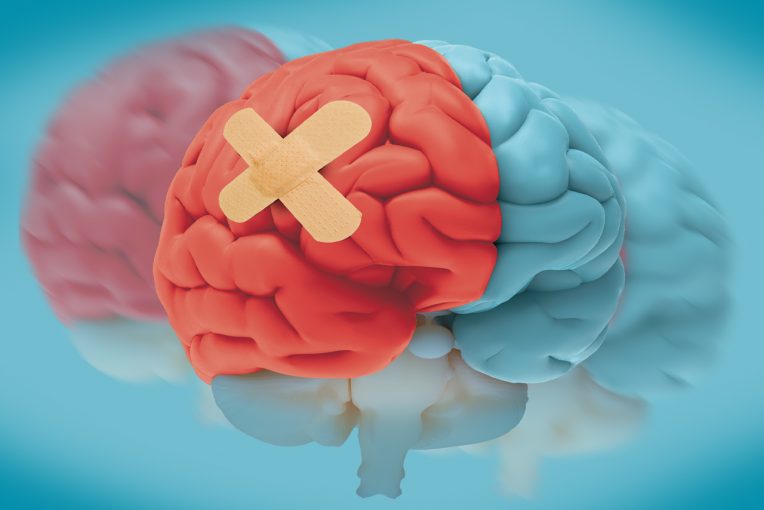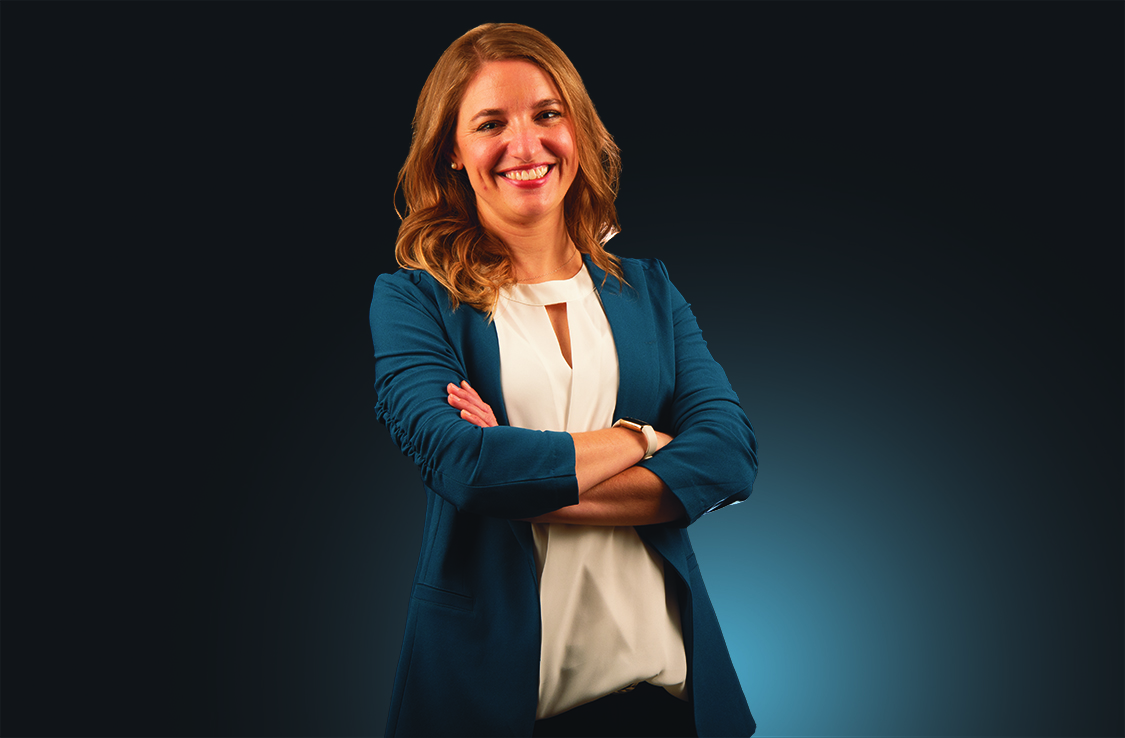When the shot left the boot of a player on the opposing team, Dr. Nikki Hoffman didn’t expect to be the next thing hit.
Hoffman was playing in an intramural soccer game on a night off from her job as a graduate assistant athletic trainer at James Madison University. She assumed the shot would be closer to the goal. She logically positioned herself to look toward that direction. But as she was doing that, the ball smacked the side of her head.
“I remember getting hit, and just becoming disoriented and sort of walking in the other direction,” said Hoffman, now in her fourth year as an assistant professor in athletic training at Illinois State.
That was 2005. It was the first in a string of eight concussions that would change the trajectory of her career. “Once you get more than one or two, it takes less force to cause them,” she said.
Call it fate. Call it coincidence. Call it whatever you’d like. While that errant shot missed its intended target, it indirectly paved the way for cutting-edge, innovative concussion research.
Appears InHoffman, an avid sports fan whose office in McCormick Hall is decked out in Philadelphia Phillies memorabilia, had always envisioned working with and helping athletes. She was set on becoming an athletic trainer for a long time. But as the concussions kept coming, so did the symptoms. Her short-term memory slowed and sometimes disappeared altogether. She experienced higher anxiety from the day-to-day rigor of athletic training.
During that time, however, she felt especially helpful to those athletes who had also suffered concussions. As someone who had gone through the experience several times, she was able to give patients peace of mind rather than just relaying statistics and data to them. She began to realize that maybe teaching and research were the paths where she could help the most.
“It’s one thing to tell our patients exactly what to expect and what they’re feeling, but until you actually go through it yourself, it’s a completely different world,” Hoffman said. “I feel like I was meant to go through the concussion experience.”
Hoffman went on to earn her Ph.D. from the University of Georgia and is now a leading expert of concussion detection and recovery mechanisms. In spring 2020, she used startup research funds to create the first-ever concussion clinic at Illinois State University. The clinic operates within Student Health Services. Students who are diagnosed with a concussion are referred to the clinic for a comprehensive evaluation.
Hoffman worked with 10 Illinois State students that first spring before the pandemic temporarily halted the program. The clinic resumed operations again last fall.
She had worked at a concussion clinic at Georgia and noted how beneficial it was to be one-on-one with a patient for an extended period of time.
“I wanted to continue that here at Illinois State to take the burden off of the physicians,” said Hoffman. “I can collect more information to learn more about patients’ concussions to hopefully establish a management approach.”
A long-term approach makes it easier to track recovery, which is the foundation of Hoffman’s research.
She is particularly interested in examining how well a patient sleeps while recovering from a concussion. In one study during her doctoral program, she had her research subjects use a wrist device (similar to a Fitbit) that measures sleep based on movement. She has continued that research at Illinois State.
What makes her sleep study so unique to concussion research is that it measures data immediately after impact in addition to long-term management. That way she covers the entire path of recovery.
“I want to know what’s going on with sleep right after concussion,” Hoffman said. “What is that night going to look like? What might the next night look like? I try to get those patients right within that acute period of 24 to 72 hours.”
Early detection is very important for a patient’s health, Hoffman said. Being able to track data and develop a recovery plan shortens how long symptoms linger. Patients who suffer from an undetected concussion, or those who try to rush back from a concussion too soon, are more susceptible to long-term effects. Those can include learning, memory, judgment, and emotional impairments, according to a study by the American Association for the Advancement of Science.
“Research has shown that if you continue to push through, you may risk getting hit again within this vulnerable period of time, or if they continue to exacerbate their symptoms, it’s going to prolong it,” Hoffman said. “Then that’s where we’re dealing with long-term effects of anxiety and depression.”
Even if 80 to 85 percent of concussion patients recover within a two-week window, it’s imperative to deal with the injury right away for the patient’s short-term quality of life. By diagnosing the concussion early and rapidly measuring sleep, Hoffman can start mapping out an appropriate recovery plan.
In November 2020, Hoffman presented “Association Between Post-concussion Intraindividual Variability In Sleep And Step Counts: An Exploratory Study” for the American College of Sports Medicine Annual Meeting. She noted how concussed individuals took longer to fall asleep and had greater night-to-night variation in the first three days following the concussion. Sleep, she concluded, may decrease symptoms, but the time frame for optimal rest days is critical.
A randomized control trial showed that individuals had a decrease in symptoms with one to two days of rest followed by a gradual return to activity compared with a strict five days of rest. Hoffman does not believe in a strict cocoon model and said there’s growing evidence suggesting sleep and symptom-limited physical activity—riding a stationary bike, walking on a treadmill—are actually optimal.
“The major thing is to stay under this subthreshold symptom line so you don’t want to exacerbate the symptoms, but you want to get them moving just to start facilitating things a little bit along where it used to be,” Hoffman said.
Concussions are a part of many sports because physical contact and hard objects are involved. Hoffman said starting tackle football later in life or minimizing the use of head balls in youth soccer are steps that can limit concussions and their impact on athletes.
While there’s still evidence to collect on how to best prevent concussions, Hoffman has dedicated her time researching what is the proper recovery for these injuries. She is an ally for anyone dealing with a new reality, and she encourages patients to be just that—patient.
“You can’t rush it,” Hoffman said. “Don’t place an expectation when you should feel better. You just have to let it run its course, do the right things, and then speak out when things aren’t right so others around you can help along the way.”
Read more about Dr. Nikki Hoffman’s research.


